Hunting has evolved throughout the years; from being mankind’s main source of sustenance to being a recreational sport with guidelines and limitations. The tools that come with the sport have evolved as well; from primitive axes and hunting snares to precision bow and arrows and rifles that can hit a target a few hundred yards away.
[the_ad_placement id=”in-text-1-type-r”]The advent of this new technology made hunting a little easier to master and a lot easier to enjoy. Rifles have enabled newcomers to bring home a game or two on any given day, given that they encounter good weather conditions and have practiced proper hunting techniques. Hunting rifles come in different forms and sizes and they are often classified depending on the type of game for which they will be used.
Some hunters consider the size of cartridge when buying a hunting rifle as this will determine how humane the game will be killed. A larger cartridge on a smaller target will leave you with close to no meat while a smaller one for a larger game will either cause the animal to die slowly and painfully, or worse, not die at all and have the bullet embedded in them until the end.
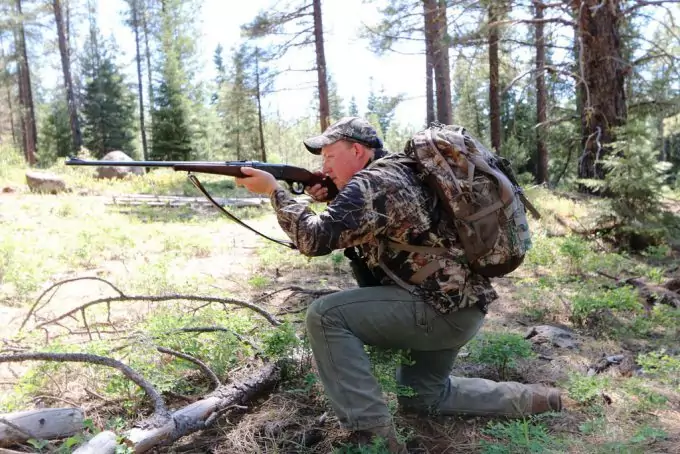
Nowadays, having a scope mounted on a rifle is fairly common and it does help with getting more accurate shots and also helps minimize tissue damage especially if the game is a little small for the cartridge that you are carrying.
What is a scope?
A scope is a gun accessory that provides magnification especially when trying to hit a target from a far. If you are not familiar with how a scope looks like, it is a smallish telescope mounted on top of the gun, usually replacing the function of the gun sight.
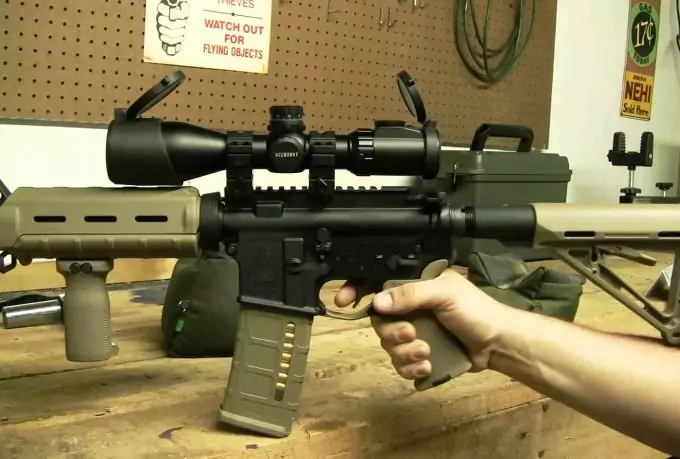
Most people mistake scopes for gun sights and although they both help the gunman take accurate aim of their target, gun sights do not offer the same features that a scope could and it also does not provide the same benefit as a rifle scope.
Secrets of the scope
Experienced rifle hunters would say that a good rifle scope should be worth as much as the gun that it is attached too. This is quite true as some have testified that a poorly made scope on a powerful gun will not always hit the target while a properly made rifle scope mounted on a low to medium quality rifle will have better results since the hunter will have better aim.
But how does a scope work?
Probably the most important parts of any rifle scope are the lenses as they function like telescopes mounted on your rifles. The two lenses have different sizes and functions although they are united in purpose: to help you hunt with ease.
The larger of the two lenses is called the objective lens and it is the one that faces away from the rifleman. The objective lens transmits light waves back to the other lens, called the ocular lens. Both lenses are housed in different sections and are often joined near the middle, depending on the design of the scope.
The ocular lens is housed on the eyepiece, which, as the name suggests, is the one you use to view the target. The objective lens is housed inside the objective bell which, more often than not, is shaped like a bell narrowing down in width as it approaches the joining section.
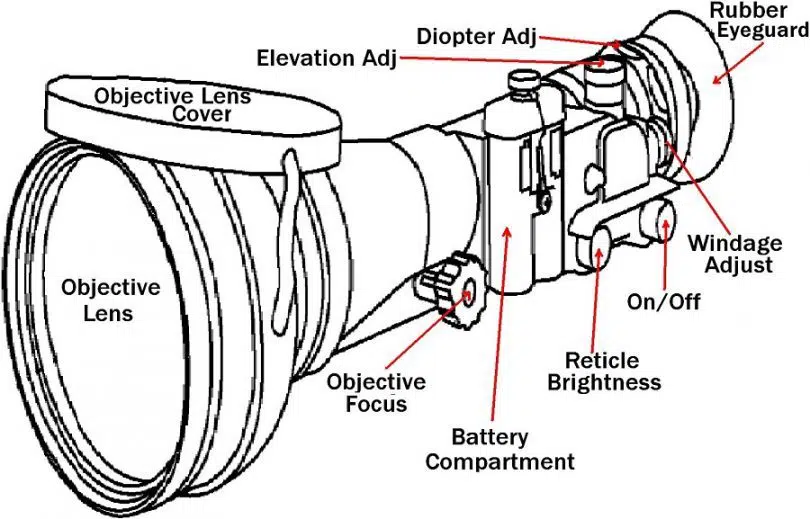
Most rifle scopes would have cross hairs, or reticle, that aids the gunman in aiming for the target. The middle part of the cross hair is usually where the bullet will enter the body of the target and is commonly oriented around the fatal spots.
Some advanced models would have a power ring situated close to the eyepiece and this ring controls the magnification setting and focuses the lens as it is adjusted. Other, more advanced, features include the elevation adjuster and the windage adjustment. Both of these features tweak the vertical and horizontal settings of the scope. Some manufacturers even offer adjustable objective lenses to correct errors caused by adjusting the magnification settings.
Rifle scope models vary depending on use; military personnel use scopes with large objective lens for better visual range but a hunter would not need that much of a range and can settle for a smaller one. Hunters would often calculate the power of the scope to determine which specific scope they would need. A typical hunting scope would have a ‘4x’ power rating, which means that the image will be enlarged four times as compared to how you would see it using the naked eye. Check out our reviews of the best night vision scopes for AR-15 rifles for more information.
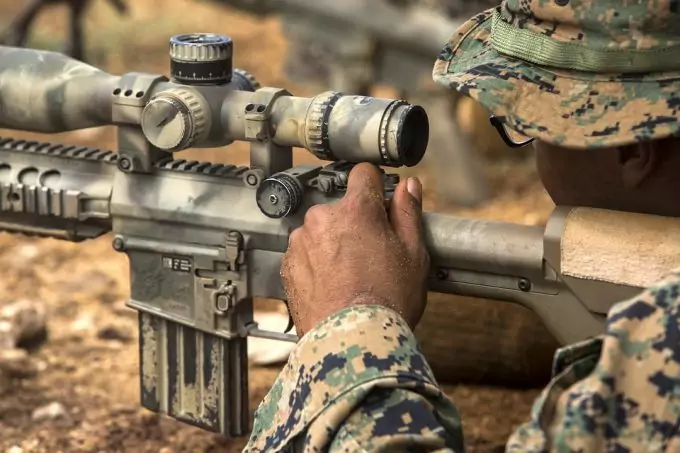
Do not be surprised if you see models that have “2-8x, 100mm” power rating, this means that the scope can magnify a target between 2-8 times and has a 100mm diameter objective lens. Poorly made scopes would list 3-9x power but would often have a blurry image when focused on both ends of the range, effectively just giving it around 5-7x magnification power.
Benefits of sighting using a rifle scope
As mentioned earlier, a good quality rifle scope can be worth twice as much as the rifle and for good cause. Using a rifle scope has many advantages which include, and is not limited to, the following:
- Higher rifle range – a good rifle can already hit a target at an effective range but mounting a good rifle scope increases the range of which the rifle can hit a target.
- Better shooting scores – specific to hunters and riflemen who like to enter competitions to prove who has the better aim. High quality scopes help you aim better and score better than the rest of the competition.
- Feeling of reassurance – shooting a rifle can affect your psychological makeup too as knowing if you can hit a target or not depends on how well you aim, and shooting badly can mean life or death. Knowing that your scope will help you aim provides a sense of reassurance when you’re out there, leaving you to worry about other things like what to eat with your meat and what not.
Having a better aim also decreases the chances of you encountering a dangerous situation as you will be able to eliminate any threat before it spots or reaches you.
Mounting a rifle scope
Mounting a rifle scope is a daunting task and it is better to seek assistance from a more experienced rifleman if you have not done it previously. Proper mounting is tantamount to you and your performance as a rifleman as a poorly mounted scope will result in bad aim and scores.
See also: Best Rifle Scope for the Money: Choosing a Hunter’s Best Friend
The first thing to do when mounting a scope is to position yourself and the rifle in a comfortable way and then try to take aim. You need to make sure that the position will not give you cramps as mounting a rifle scope can take some time. The second thing to do is to gather the scope, the scope base, its mounting rings and the tools that you would need to install it like allen wrenches and screw drivers.
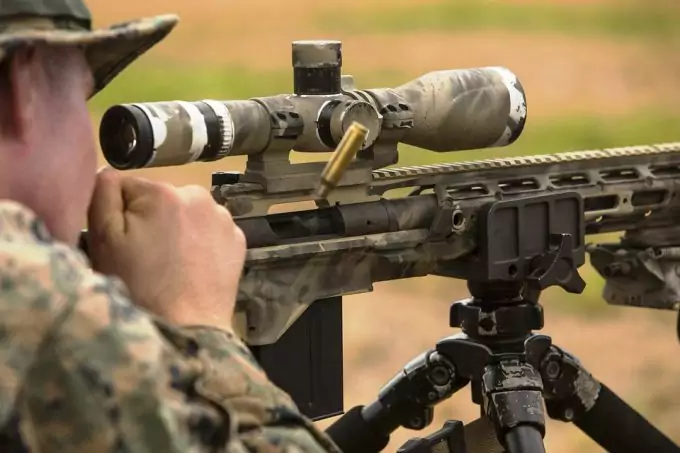
Prepare your workstation so that it is clean and well lit and that you would have enough space, say 25 yards, for you to test if you have calibrated the scope well. The mounts or scope bases are often attached to the part of a rifle that holds the firing and ammunition feed mechanisms. The base is connected to the rifle using mounting rings which are actually clamps that hold the scope on the upper half while the lower half connects to the rifle itself.
The size of the objective lens helps determine the height of the mounting rings and it is also important to take note that the mounting rings, scope base and the scope itself should match as a poorly matched set can cause aiming issues in the future.
To properly mount a rifle scope, you must first need to secure your rifle in a gun vise, this helps you stabilize the gun as you mount the scope, effectively freeing up your hands for more important work. Lightly oil the area where the scope will be mounted as well as the bottom part of the scope mechanism. Different scope bases have different mounting instructions and it is vital that you follow them religiously.
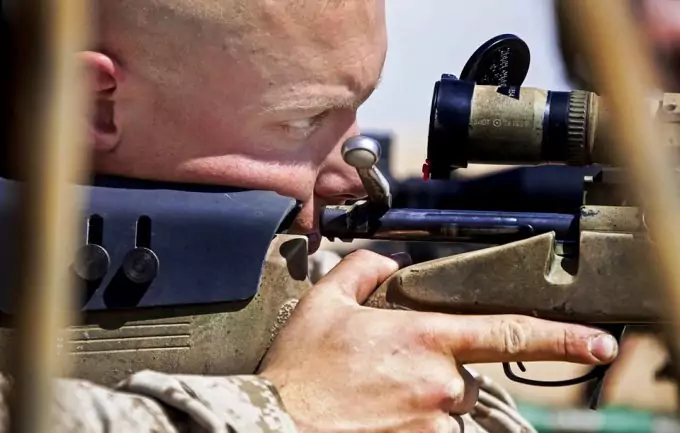
Make sure to use the right tool for the right part and ensure that the connection between the lower half of the mounting rings and the rifle is tight and secure. Once mounted, take a target and position it about 22-25 yards away and adjust your scope, as close to its highest magnification point as possible. Once you have set it to the highest level, place the scope on the already installed mounting ring and screw it loosely; this will allow you to adjust the rifle scope easily during this stage of the process.
[the_ad_placement id=”in-text-2-type-r”]Take a peek into the eyepiece and see if you can align the cross hairs with the rifles iron sight while taking aim at your target. Once you can do this without error and without adjusting the scope’s position, then you’re all set. Tighten all screws and get ready to take sight.
How to sight in a rifle scope
Sighting a scope is the process of aligning the cross hairs with the iron sights and testing it on a target. It may be simple to do at first glance but your rifle’s performance is highly dependent on how you have sighted it in.
The first thing to do when sighting in a rifle scope is to find an open area than has a minimum clearance of about 100 yards and should be as far away as possible from residential zones or areas with high commuter traffic. This will prevent injuries from stray bullets and will also keep you from being arrested if doing so is against the law in your county.
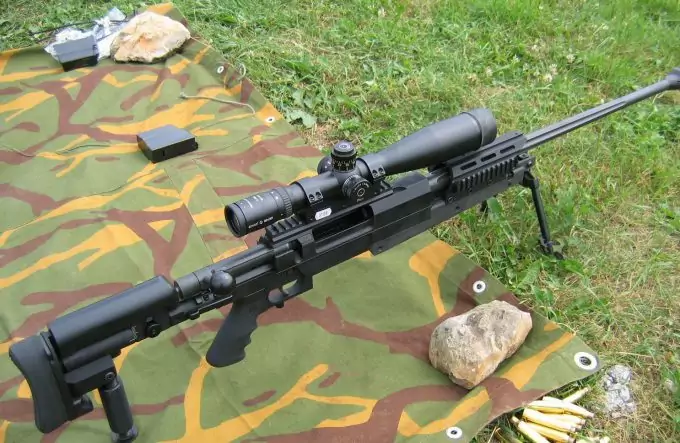
A shooting range is probably the best place to sight in a rifle as targets are already set-up and you have other shooters who can help you if in case you need assistance as well as having other supplies that you might need. If a shooting range is not accessible then an open, public land will do but double check with the local authorities if you can use the identified land for sighting in and practice.
The next thing to do is to mount the rifle on a gun vise, or a rifle base, and make sure that the scope is mounted properly and that the cross hairs are level. It is also important to make sure that you have sufficient eye relief to prevent injuries resulting from recoil. Also, have different kinds of ammunition ready as you may need to test them to check how well they would perform using your rifle. Manufacturers have suggested sizes for their rifles but sometimes testing different kinds on them will help you figure which size really is the best.
Bore sighting comes next. Make sure that the rifle is not loaded and that the barrel is clear of any obstructions, take the bolt out and stand behind the rifle. Look through the bore, or the gun barrel, and adjust the rifle until the target is centered on the middle of the bore. Without moving the rifle, check the scope’s cross hairs and adjust it so it would be aligned on the same point of the target as the bore.
Put the rifle bolt back in and prepare to shoot. Take careful aim at the target from 25 yards and fire once. Check your cross hair and aim for the hole that the first shot created. You may need to adjust your cross hairs again, vertically, horizontally or both. Take another shot and check if you hit the same bullet hole or close enough to it. You might need to take several shots and make some minor adjustments to the rifle scope but always remember that it does not have to be perfect the grouping just needs to be as close as possible.
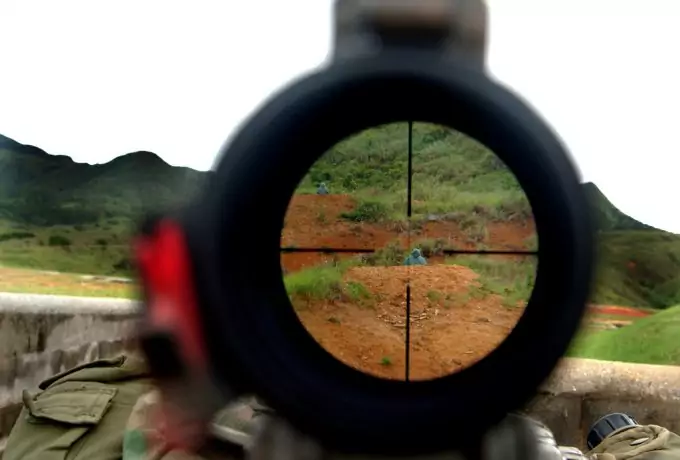
Adjustments using the turrets can take some time to master but one key rule to remember is that most rifles have ¼ MOA adjustments. This means that in order for you to move the bullet impact, from the same distance of 25 yards, by one inch, you would need to adjust the windage or elevation adjuster sixteen (16) times (or clicks).
For example, you shoot your rifle about bore sighting three times and you find that they are a off by a few quarters of an inch. Measure the distance of the farthest shot to the one closest to the center of the target and use the ¼ rule. In this instance, let’s say that the measurement that the bullet impact hole needs to move is ¼ inch going up. With this measure, adjust the elevation adjuster by 4 clicks going up.
After the initial adjustment, fire another group of shots using a different target from the same distance and adjust again as needed. Once you have hit your target with no fail, you can then move to the 100 yard distance.
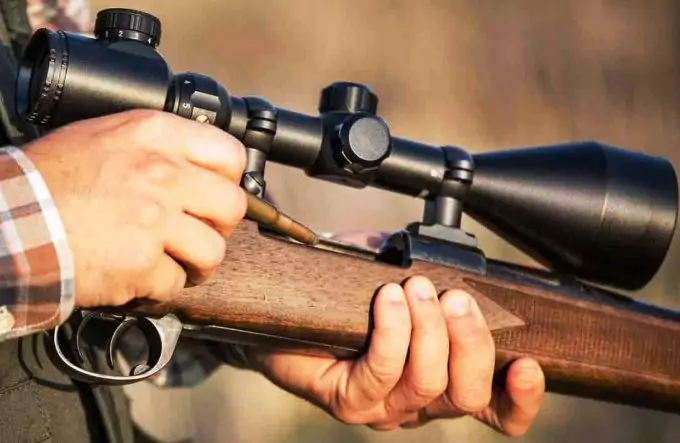
Using the same methods described earlier, fire your first volley of 100 yard shots and make your adjustments. Remember that from this distance, 1 inch of movement equals 4 clicks. Keep firing until you are confident enough to know that you are hitting your target where you want to hit it. You may need to make some minor adjustments again.
[the_ad_placement id=”in-text-3-type-r”]Once you’ve settled on your final sight settings, fire one last group of shots to reaffirm your aim. Remember that once you have sighted in a rifle scope it will take some time before it becomes off aim, unless you dropped your rifle or had your scope damaged.
A good maintenance tip is check your rifles aim from time to time especially if it’s not hunting season just to make sure that your rifle is ready to use at any given time.
Points to consider
When buying a rifle scope, it is always a good rule to make sure that the scope model and the rifle are compatible with no underlying issues. Take your time doing research and ask as many questions as you can when in a gun shop to make sure that you have all bases covered.
Sometimes the most reliable rifle scopes are those that sell for a hefty amount but a good, mid-priced can be as good as any as long as you know to sight in a scope properly. Do check out our piece on how to get the most accurate shot make hunting more enjoyable.


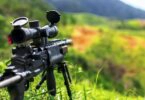
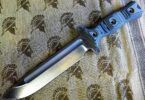
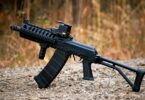
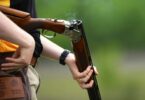
The scope is very important part of the rifle, as it translates to an accurate shot and sometimes you only have one shot so you better make it count.
That is nicely said Judith. Rifle scopes make shooting targets easier but the best rifleman does not rely on the scope alone. There are a lot of factors that come into play here and you can’t compromise one over the other.
Andrew.
I think by just pulling the bolt on and looking down the barrel can also help. Right?
Hi,
Sighting can sometimes be a difficult and time-consuming process, but it doesn’t have to be so. This article is specifically designed to help you through the process.